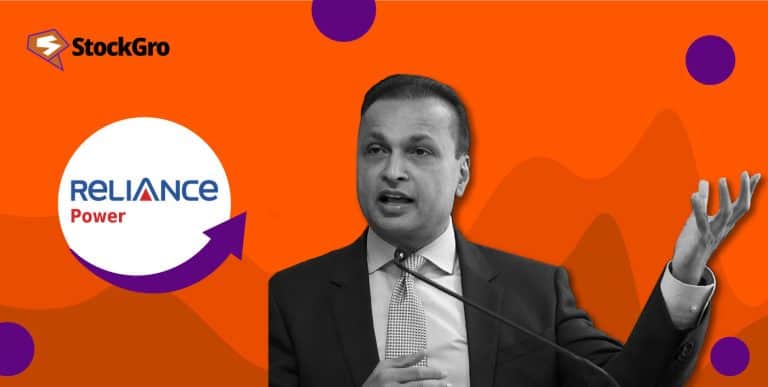
With India’s manufacturing sector seemingly on the rise, driven by PM Modi’s ‘Make in India’ initiative, these funds have indeed delivered impressive returns recently. But should you consider investing in them?
Let’s break down the numbers and the context to help you make an informed decision.
Performance of the manufacturing sector
Over the past year, manufacturing mutual funds have outperformed many other investment funds. For example:
- ICICI Prudential Manufacturing Fund topped the charts with a 68.08% return.
- Mirae Asset Nifty India Manufacturing ETF delivered a solid 61.18% return.
- Mirae Asset Nifty India Manufacturing ETF FoF and Navi Nifty India Manufacturing Index Fund offered returns of 60.49% and 60.09%, respectively.
- Kotak Manufacture in India Fund provided a 53.66% return.
These figures are certainly impressive. On average, manufacturing-themed mutual funds have offered around 60.70% returns in the past year.
You may also like: https://www.stockgro.club/blogs/trending/textile-industry-in-india/
The driving forces behind the success
Several factors have contributed to these funds’ remarkable performance. The Modi government’s ‘Make in India’ initiative aims to make India self-sufficient and transform it into a global manufacturing hub. Various production-linked incentives (PLIs) have been launched to boost output in key industries such as pharmaceuticals, electronics, auto and auto ancillaries, textiles, and more.
From 2014 to 2019, manufacturing was lagging in terms of returns. However, since the government’s push for domestic manufacturing, the sector has seen a total turnaround. Between 2021 and 2024, the Nifty Manufacturing Index outperformed even the Nifty 50, Nifty 500, Bank Nifty, Nifty IT, and Nifty Services indices.
Also read: https://www.stockgro.club/blogs/personal-finance/treps/
Historical performance and future outlook
It’s worth noting that these funds have not only done well in the short term but have also shown strong performance over longer periods. The ICICI Prudential Manufacturing Fund, for instance, has a track record of over five years, delivering 26.60% in the last five years and 30.34% in the last three years.
Looking forward, the outlook for the manufacturing sector appears promising. India’s robust domestic demand, favourable export opportunities, and government initiatives are creating a positive environment for the sector. The shift towards electric vehicles (EVs) and the growth in renewable energy and electronics sectors are also significant contributors.
However, analysts caution that thematic funds are cyclical in nature. Timing the market is crucial, and getting the entry and exit points right can be challenging. Therefore, these funds are high-risk options, best suited for investors with thorough knowledge of the sector and a long-term investment horizon.
Lessons from the past: The infrastructure boom
Before you decide to invest, it’s essential to look at historical precedents. Back in 2006-07, there was a similar hype around infrastructure funds. The initial enthusiasm led to a flurry of new fund offers (NFOs), but the returns did not justify the hype.
By March 2013, nearly all infrastructure funds were underperforming, delivering only 8.3% annualised returns over 15 years, compared to the 11.7% returns of average flexi-cap funds.
Manufacturing vs. Infrastructure: What’s different?
While there are parallels between the infrastructure boom and the current manufacturing hype, there are also key differences. Unlike the heavily leveraged infrastructure sector of the past, today’s manufacturing companies have healthier balance sheets. The manufacturing theme is also more diversified, covering a mix of consumption-driven and old-economy businesses, reducing risk.
The Nifty India Manufacturing Total Return Index (TRI), the benchmark for these funds, includes a diversified mix of sectors such as auto and auto components (31%), capital goods (21%), and healthcare (14%).
Also read: https://www.stockgro.club/blogs/personal-finance/5-key-metrics-for-mastering-mutual-fund-evaluation/
Should you invest?
Manufacturing funds do present a compelling theme, supported by various positive factors. However, it’s crucial to be realistic about expectations and understand the risks involved.
Here are a few points to consider:
- Diversified exposure: Existing flexi-cap funds already provide exposure to the manufacturing sector and other sectors like banking and financial services, which are currently valued attractively. This diversification can offer better comfort than a dedicated bet on manufacturing.
- Long-Term commitment: India’s journey to becoming a manufacturing hub will be a long climb. Investors should not expect big payoffs within a few years. Thematic funds require a long-term investment horizon and a higher risk appetite.
- Valuations and timing: While the manufacturing sector’s current performance is strong, valuations are crucial. Some analysts believe stocks are trading at a significant premium, making it essential to time your investment correctly.
- Knowledge and strategy: Thematic or sector funds are best suited for investors with intimate sector knowledge. If you can take risks and know when to pull out, you can consider investing in a thematic fund. Otherwise, a diversified fund managed by a professional might be a safer bet.
Conclusion
Manufacturing mutual funds have shown stellar performance recently, driven by government initiatives and strong sectoral growth. However, like any investment, they come with risks.
If you have a thorough understanding of the sector and are prepared for the cyclical nature of thematic funds, they might be worth considering.
Always remember to assess your risk appetite, investment horizon, and financial goals before making any investment decisions.

